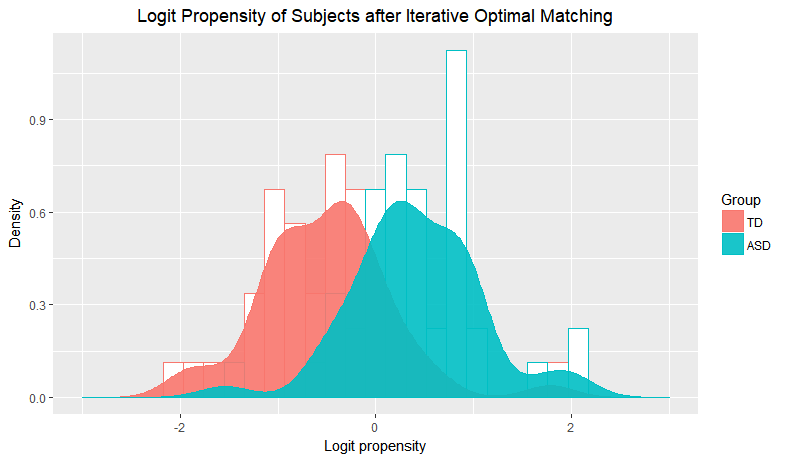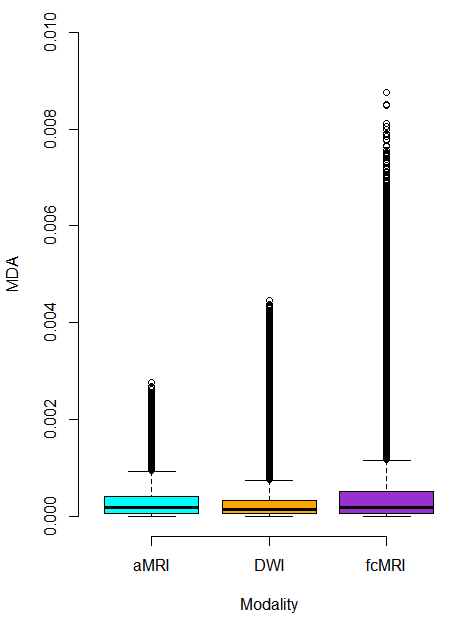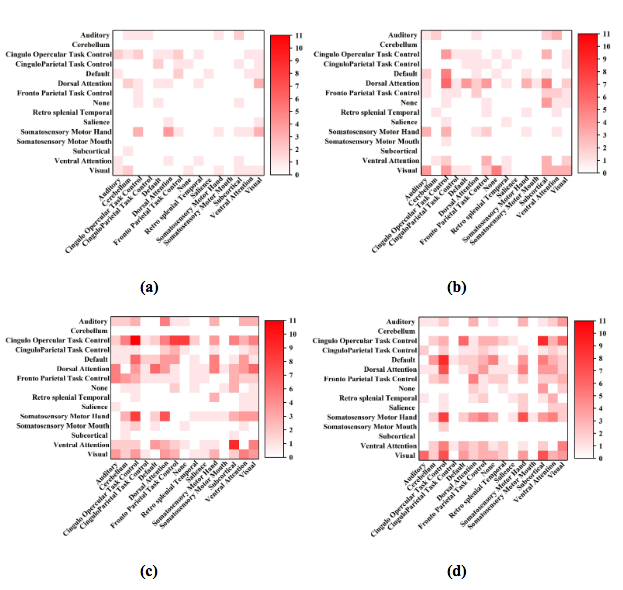Computational Projects in Autism
Matching Methods for Observational Data With Small Group Sizes
Research question: Which matching algorithm should we use to obtain desired balance between two groups while maintaining enough subjects in each group?
In the observational studies, matching is used to optimize balance and sample size. Although many matching algorithms can achieve this goal, in some fields, matching could face its own challenges. Datasets with small sample sizes and limited numbers of control reservoir are prone to this issue. This problem may arise in many ongoing research studies, including those in autism spectrum disorders (ASDs). In this project, we are interested in eliminating the effect of undesirable variables using two types of algorithms, 1:k nearest matching and full matching. This project is led by Afrooz.


"IterOptMatch," Statistical R Package
Research question: How to optimally match two groups of participants on multiple variables with missing data?
To decipher the imaging data from functional connectivity MRI (fcMRI) scans, one must first eliminate the undesirable effects of critical background variables before any pattern recognition procedures can be performed. In an observational study, treated subjects are often matched to control subjects with similar values of covariates in an effort to form treatment groups that are comparable. Currently, most of the observational studies match their subjects in a difficult and time consuming manner. In this study led by Afrooz, a statistical R package is developed and implemented to obtain optimized balance on multiple variables. This package could be used for both small and large size sample size observational cohorts.
Resting State fMRI Connectome Differentiating Autism From Typical Development
Research question: How is whole brain connectome associated with behavioral measures?
Exploring brain-behavior links of the connectome is computationally intensive and requires stringent correction and is limited by a univariate statistical approach for comparisons. In this project led by Afrooz, we used multivariate distance matrix regression (MDMR), the connectome wide association framework. Using this method, we aim to detect voxels whose brain connectivity patterns tend to be more similar in an individual with similar Social Responsiveness Scale (SRS) scores than in one with dissimilar SRS values. Identifying presence and extent of the social impairment associated with autism, SRS distinguishes those with autism spectrum conditions from children who are typically developing.


Diagnostic Classification of ASD Using Multimodal Imaging Data
Research question: Which imaging modality is more informative when compared to others in classification of ASD?
Despite the numerous studies conducted with different neuroimaging modalities applied to the diagnostic classification of autism spectrum disorders (ASDs) by use of machine learning algorithms, none have assessed whether one MRI modality may be more informative compared to others. In this study, led by Aina, conditional random forest (CRF) was applied to structural (anatomical) MRI, diffusion tensor imaging (DTI), and functional connectivity MRI (fcMRI) data to assess which modality may be more or less informative.
Clustering Functional Connectivity Data With the Goal of Identifying ASD subtypes
Research question: Are there possible subtypes in ASDs based on language, auditory, and amygdala connectivity?
There are numerous studies that have used whole brain connectivity matrix in order to find potential subtypes in autism. This study, however, led by Aina, focuses on specifically selected brain regions, which were previously identified as informative in subgrouping ASDs.


Potential Subtyping Using Behavioral Measurements
Research question: Can subtyping ASD participants based on behavioral and diagnostic measures reveal distinct resting state functional connectivity (rs-fc) patterns?
ASDs are characterized by great heterogeneity of symptoms, likely secondary to multiple etiological subtypes of ASDs. Few studies have directly focused on imaging data with the goal of characterizing subtypes of ASDs, but in the study performed by Theo behavioral and neuropsychological data are used with unsupervised machine learning to characterize potential subtypes of ASDs. We are investigating whether different subtypes based on the behavioral data are linked to different resting state functional connectivity profiles.
Classification of High Severity ASD in fMRI Using Functional Connectivity & Conditional Random Forest
Research question: What are the resting-state functional connectivity patterns corresponding to symptoms severity in ASDs?
Identification of potential imaging biomarkers and functional connectivity patterns corresponding to autism symptom severity through computer vision techniques may help in developing more targeted inteventions. In this project, which was led by Jac, the brain connections in ASD participants with moderate to severe symptoms and typically developing (TD) children are studied using functional MRI and machine learning methods.


Subtyping ASD Participants Using Multi-Modal Imaging
Research question: How multimodal imaging can help to identify potential subtypes of ASDs?
ASD is a highly heterogeneous disorder, with a broad range of the types and severity levels of symptoms. Numerous studies defined ASD subtypes based on the data from a single imaging modality. However, it may be beneficial to utilize data from multiple imaging modalities to define subtypes in ASD. In this project, which is led by Jac, we combine three MRI modalities (anatomical, diffusion and functional MRI) using in-house data to identiy ASD subtypes.
